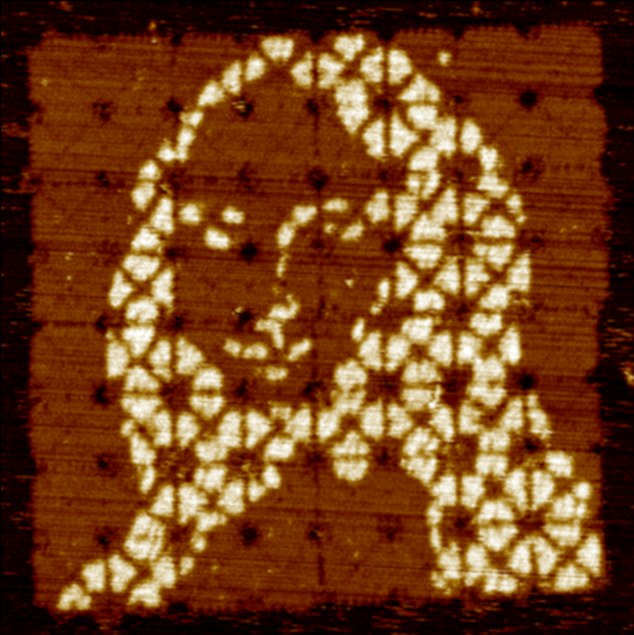It is a work of art noted for its enigmatic smile, and now scientists have recreated the Mona Lisa on the microscopic scale.
Experts built the world’s smallest version of Leonardo da Vinci’s masterpiece, measuring 0.5 square micrometres, about the size of an e-coli bacterium.
They used a process called DNA origami, they manipulated strands of genetic code gene strands to fold and assemble into the right shape.
While DNA is perhaps best known for encoding the genetic information of living things, the molecule is also an excellent chemical building block.
The Caltech team developed software that can take an image, like the Mona Lisa, divide it up into small square sections and determine the DNA sequences needed to make up those squares.
Next, their challenge was to get those sections to self-assemble into a superstructure that recreates the final image.
The key to doing this was to assemble the tiles in stages, like assembling small regions of a puzzle.
They then joined those regions together, to make larger areas, before finally putting them all together to make the completed puzzle.
Grigory Tikhomirov, senior postdoctoral scholar and lead author of the new study, said: ‘We could make each tile with unique edge staples so that they could only bind to certain other tiles and self-assemble into a unique position in the superstructure.
‘But then we would have to have hundreds of unique edges, which would be not only very difficult to design but also extremely expensive to synthesize.
‘We wanted to only use a small number of different edge staples but still get all the tiles in the right places.’
To make a single square of DNA origami, the team needs a long single strand of DNA and many shorter single strands, called staples.
These are designed to bind to multiple designated places on the long strand.
When the short staples and the long strand are combined in a test tube, the staples pull regions of the long strand together, causing it to fold over itself into the desired shape.
A large DNA canvas is assembled out of many smaller square origami tiles.
Molecules can be selectively attached to the staples in order to create a raised pattern that can be seen using atomic force microscopy.
The edges of the pieces are the same, but because they are assembled in stages, there is no risk of a tile being put in the wrong place.
This means there is no risk, for example, of one corner tile attaching in the wrong corner.
The team has called the method ‘fractal assembly’ because, as with abstract mathematical objects called fractals, the same set of assembly rules is applied at different scales.
This means that the same rules govern the construction of a puzzle, no matter what it’s size.












